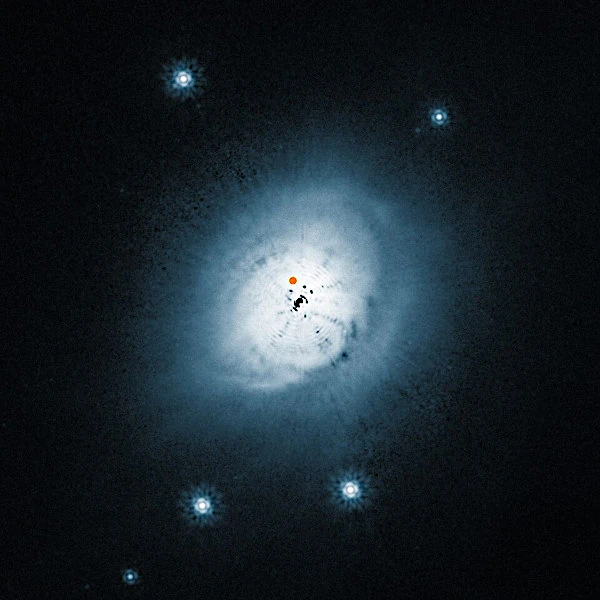
HD 100546 b is a forming exoplanet located approximately 320 light-years from Earth in the constellation of Musca. First detected in 2013 through direct observations with the ESO's Very Large Telescope (VLT), this planet represents a unique case study of planetary formation processes.
This discovery was confirmed by several complementary methods:
HD 100546 b is a super-Jupiter with fascinating features:
| Parameter | Value |
|---|---|
| Mass | ~20 Jupiter masses |
| Radius | ~1.5 Jupiter radii |
| Temperature | ~900-1000 K |
| Distance from the star | ~50 astronomical units |
| Orbital period | ~250 Earth years |
Unique feature: HD 100546 b is still accreting, surrounded by a circumplanetary disk that could give rise to moons. Spectroscopic observations have revealed the presence of:
Although HD 100546 b is a gas giant unsuitable for life as we know it, its system presents intriguing characteristics:
The star HD 100546 is a young B9Ve type star, approximately 10 million years old. The protoplanetary disk surrounding it shows complex structures:
Scientists speculate that forming exomoons around HD 100546 b could eventually present conditions favorable for the emergence of life, with:
HD 100546 b offers a unique opportunity to study:
This exoplanet is among the priority targets for the James Webb Space Telescope, whose observations could reveal: